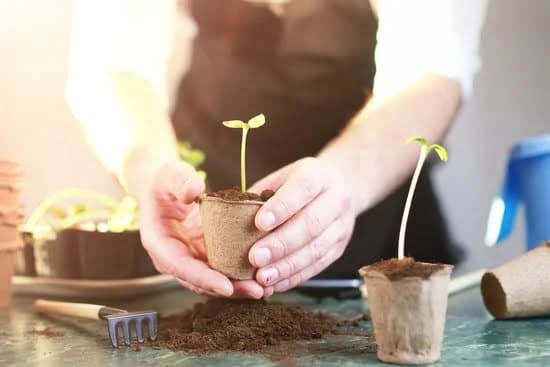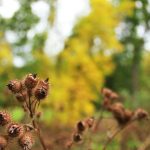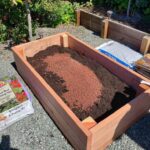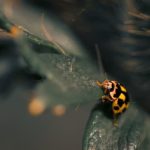Are you a gardening enthusiast residing in South Florida and looking for some fresh and creative south florida gardening ideas? Well, look no further. This article is your ultimate guide to creating a lush and vibrant garden in the unique climate of South Florida. From choosing the right plant varieties to designing an aesthetically pleasing layout, we have got all the tips and tricks you need to succeed in your gardening endeavors.
South Florida is known for its tropical climate, sandy soil, and abundant sunshine, making it a paradise for gardening enthusiasts. With the right knowledge and techniques, you can create a stunning garden that thrives in this distinctive environment. Whether you are a seasoned gardener or just starting out, this article will provide you with valuable insights on how to make the most of your gardening experience in South Florida.
In this comprehensive guide, we will explore the best plant varieties for South Florida, offer tips on designing a beautiful garden layout, discuss essential care and maintenance practices, and provide advice for beginners looking to get started. Additionally, we will address common challenges such as pests, diseases, and extreme weather that are unique to gardening in South Florida. So roll up your sleeves, grab your gardening gloves, and get ready to embrace the beauty and bounty of South Florida gardening.
The Best Plant Varieties for South Florida
South Florida’s unique climate and soil conditions make it an ideal location for a wide variety of plant species to thrive. When it comes to choosing the best plant varieties for South Florida gardening, it’s important to consider the hot and humid weather, as well as the sandy and limestone-rich soil that is prevalent in the region.
Fortunately, there are many plants that are well-suited to these conditions, bringing color and vibrancy to gardens across South Florida.
One of the most popular plant varieties for South Florida gardens is the colorful and low-maintenance bougainvillea. This plant thrives in the warm climate and can withstand the dry conditions often experienced in this region. Additionally, heliconias, also known as lobster claws, are another great choice for adding tropical flair to your garden. These plants are not only beautiful but also attract hummingbirds with their vibrant flowers.
For those looking to add some greenery to their South Florida garden, palm trees such as coconut palms and royal palms are excellent choices. These trees can withstand the heat and humidity, making them a staple in many local landscapes. In addition, native flowering plants like hibiscus and bird of paradise bring bursts of color to any garden while requiring minimal maintenance.
When planting a South Florida garden, it’s essential to choose plant varieties that can thrive in the unique climate and soil conditions of the region. By selecting the right plants for your garden, you can ensure that your outdoor space will be lush, vibrant, and full of life all year round.
| Plant Varieties | Description |
|---|---|
| Bougainvillea | Colorful and low-maintenance plant that thrives in warm climates. |
| Heliconias | Tropical plants known for their vibrant flowers attracting hummingbirds. |
| Palm Trees (Coconut palms & Royal palms) | Trees that can withstand heat and humidity, adding greenery to any garden. |
Designing Your South Florida Garden
When it comes to designing a garden in South Florida, there are several unique factors to consider. From the hot and humid climate to the sandy soil, creating an aesthetically pleasing layout requires careful planning and consideration of the local conditions. Here are some tips and tricks for designing a beautiful South Florida garden.
Choose Native Plants
One of the best ways to ensure a successful and visually appealing garden in South Florida is to choose native plants. Native plants are well-adapted to the local climate, making them more resilient and low-maintenance. They also provide food and habitat for local wildlife, contributing to a thriving ecosystem. Consider incorporating native species such as coontie, firebush, and beautyberry into your garden design for a natural and sustainable look.
Utilize Vertical Space
In small or limited spaces, utilizing vertical space can help maximize greenery and create an inviting atmosphere. Consider adding trellises, arbors, or vertical planters to grow climbing vines, flowers, or herbs. This not only adds visual interest but also increases the overall greenery in your garden without taking up valuable ground space.
Incorporate Water Features
South Florida’s warm climate makes water features an attractive addition to any garden design. Whether it’s a small pond, fountain, or birdbath, water features can add tranquility and beauty to your outdoor space. Additionally, they can provide a source of hydration for wildlife such as birds and butterflies. When designing your garden layout, consider incorporating a water feature as a focal point or as part of a serene oasis within your landscape.
By considering these tips for designing your South Florida garden layout and incorporating native plants, utilizing vertical space, and incorporating water features into your design plans you can create an aesthetically pleasing outdoor space that thrives in the unique climate of South Florida.
Maintaining Your Garden in South Florida
When it comes to maintaining a garden in South Florida, there are several essential care and maintenance practices that gardeners need to keep in mind. With the unique climate and soil conditions of the region, proper maintenance is crucial for ensuring a healthy and vibrant garden all year round. From watering and fertilizing to pest control and pruning, here are some key tips for maintaining your garden in South Florida.
One of the most important aspects of maintaining a garden in South Florida is proper watering. With the heat and humidity of the region, plants can easily become dehydrated if not watered regularly. It’s important to water deeply and less frequently to encourage deep root growth, especially during the dry season. Using soaker hoses or drip irrigation systems can help ensure that water reaches the roots where it’s needed most.
In addition to watering, regular fertilization is also essential for maintaining a healthy garden in South Florida. The region’s sandy soil lacks many essential nutrients that plants need to thrive, so it’s important to supplement with a balanced fertilizer throughout the growing season. Organic fertilizers can be a great option for providing long-term nutrients to your plants without harming the environment.
| Maintenance Practice | Description |
|---|---|
| Watering | Water deeply and less frequently using soaker hoses or drip irrigation systems. |
| Fertilization | Regularly supplement with a balanced fertilizer throughout the growing season, considering organic options. |
South Florida Gardening Tips for Beginners
If you’re new to gardening in South Florida, you might be wondering how to get started and what it takes to succeed in this unique climate. With the right knowledge and a few helpful tips, you can create a beautiful and thriving garden that will bring joy and beauty to your outdoor space. Here are some essential South Florida gardening ideas for beginners to help you get started on the right foot.
Understanding the Climate and Soil
One of the first things to consider when starting a garden in South Florida is the unique climate and soil of the region. South Florida is known for its hot and humid weather, which can be both a blessing and a challenge for gardeners.
It’s important to choose plant varieties that can tolerate these conditions, such as orchids, bromeliads, hibiscus, and bougainvillea. Additionally, the sandy, well-draining soil in South Florida may require amendments such as compost or peat moss to improve its quality for gardening.
Choosing the Right Plants
When it comes to selecting plants for your South Florida garden, it’s essential to choose varieties that are well-suited to the climate and soil of the region. Consider native plants like coconut palms, seagrape trees, firebush, and wild coffee, which are adapted to the local conditions and will thrive with less maintenance. Tropical fruit trees like mangoes, avocados, and bananas also do well in South Florida’s climate.
Watering and Irrigation
Proper watering is crucial for successful gardening in South Florida. The hot and humid weather can lead to rapid evaporation of moisture from the soil, so it’s important to water your plants regularly. Consider installing an irrigation system with drip emitters or soaker hoses to ensure that your garden receives consistent watering without wasting water through runoff or evaporation. Additionally, consider collecting rainwater in barrels during the wet season to use for irrigation during drier periods.
With these South Florida gardening tips for beginners in mind, you’ll be well-equipped to start your own garden in this vibrant region. By understanding the climate and soil, choosing the right plants, and implementing proper watering techniques, you can create a lush and thriving outdoor space that reflects the beauty of South Florida’s natural landscape.
Dealing With Common South Florida Gardening Challenges
South Florida’s unique climate and environment can pose challenges for gardeners, including dealing with pests, diseases, and extreme weather conditions. However, with the right knowledge and strategies, it is possible to overcome these challenges and maintain a healthy and vibrant garden. When it comes to pests, common invaders in South Florida gardens include aphids, whiteflies, and scale insects. These pests can cause damage to plants by feeding on their sap or transmitting diseases.
To address pest issues in your South Florida garden, consider using natural predators such as ladybugs or lacewings that feed on common garden pests. Additionally, practicing good garden hygiene by regularly removing any diseased or infested plant material can help prevent the spread of pests. Applying horticultural oils or insecticidal soaps can also be effective in controlling pest populations while minimizing harm to beneficial insects.
In terms of diseases, South Florida’s warm and humid climate can create ideal conditions for fungal and bacterial infections in plants. To prevent the onset of diseases, it is important to select disease-resistant plant varieties when designing your garden. Proper watering practices that allow for good air circulation around plants can also help minimize the risk of fungal infections. Should a disease issue arise, prompt identification and treatment are essential to prevent further spread within your garden.
In addition to addressing specific pest and disease challenges in South Florida gardening ideas,it is important to be prepared for extreme weather events such as hurricanes and heavy rainfall. Be sure to secure any loose containers or structures in your garden before a storm hits and have a plan in place for protecting delicate plants from high winds or flooding.
By staying informed about potential weather hazards and taking proactive measures to safeguard your garden, you can mitigate the impact of extreme weather on your green space.
Sustainable and Eco-Friendly Gardening Practices in South Florida
When it comes to gardening in South Florida, there are several sustainable and eco-friendly practices that you can incorporate into your garden care routine. Not only will these practices help protect the environment, but they can also benefit the overall health and vitality of your garden. Here are some south florida gardening ideas for sustainable and eco-friendly gardening practices:
Composting
Utilize kitchen scraps, yard waste, and other organic materials to create nutrient-rich compost for your garden. Composting not only reduces the amount of waste sent to landfills, but it also provides a natural and healthy way to nourish your plants. By using homemade compost, you can minimize the need for chemical fertilizers that may harm the environment.
Water Conservation
In South Florida, water conservation is crucial due to the region’s unique climate. Consider installing a rain barrel to collect rainwater for watering your plants. Additionally, incorporate drought-tolerant plant varieties into your garden design to minimize water usage. Mulching around plants can also help retain moisture in the soil, reducing the need for frequent watering.
Natural Pest Control
Avoid using harmful chemical pesticides by implementing natural pest control methods in your South Florida garden. Introduce beneficial insects such as ladybugs and lacewings to combat common pests like aphids and caterpillars. You can also make homemade insecticidal soap using non-toxic ingredients to effectively manage pest issues without harming the environment.
By incorporating these sustainable and eco-friendly gardening practices into your South Florida garden care routine, you can contribute to environmental preservation while enjoying a lush and thriving outdoor space. It’s important to remember that even small changes in gardening habits can make a significant impact on the ecosystem. Embracing these south florida gardening ideas will not only benefit your garden but also support the overall well-being of the environment in which you live.
South Florida Gardening in Small Spaces
For those living in South Florida with limited outdoor space, there are still plenty of opportunities to create a lush and beautiful garden. With the right planning and some creative ideas, even small spaces can be transformed into vibrant oases. Here are some south florida gardening ideas to help you maximize greenery and beauty in limited areas:
- Choose the Right Plants: Opt for compact or dwarf varieties of plants that won’t overwhelm a small space. Some great options for south florida gardening ideas include bougainvillea, croton, and heliconia, which add colorful foliage and flowers without taking up too much room.
- Vertical Gardening: Utilize vertical space by installing trellises, hanging planters, or wall-mounted containers. This allows you to grow a variety of plants without sacrificing valuable ground space.
- Container Gardens: Use containers of different sizes and shapes to create visual interest and maximize planting space. Consider planting herbs, succulents, or ornamental grasses in containers to add texture and variety to your small garden.
In addition to these south florida gardening ideas for small spaces, it’s also important to focus on efficient maintenance practices to keep your garden looking its best. Regular pruning, watering, and fertilizing will help ensure that your plants thrive in their confined environment. By implementing these strategies, even those with limited outdoor space can enjoy the beauty of a South Florida garden.
Conclusion
In conclusion, South Florida offers a diverse and vibrant environment for gardening enthusiasts to explore and cultivate. By embracing the unique climate and soil conditions of the region, gardeners can create lush and beautiful outdoor spaces that thrive in this tropical paradise. The key to successful South Florida gardening lies in selecting the right plant varieties, designing an aesthetically pleasing layout, and maintaining a healthy garden through essential care practices.
For those looking to get started with South Florida gardening, there are plenty of resources and tips available to help beginners succeed in this unique environment. From choosing the right plants to understanding the common challenges such as pests, diseases, and extreme weather, there is no shortage of guidance for those eager to delve into the world of gardening in South Florida.
By incorporating sustainable and eco-friendly practices, gardeners can also do their part for the environment while creating beautiful outdoor spaces.
As more people are drawn to urban living, South Florida gardening in small spaces has become increasingly popular. With the right strategies, it’s possible to maximize greenery and beauty even in limited areas.
Whether it’s a balcony, rooftop, or small backyard, there are plenty of creative ideas for bringing the beauty of South Florida gardening into compact spaces. By embracing these ideas and taking advantage of all that South Florida has to offer, gardening enthusiasts can create stunning outdoor oases that reflect the natural beauty of the region.
Frequently Asked Questions
When Should I Start My Garden in South Florida?
In South Florida, the best time to start your garden is in the fall or early spring when the temperatures are cooler. This allows for strong root growth before the intense summer heat sets in.
What Are the Best Vegetables to Grow in South Florida?
The best vegetables to grow in South Florida include tomatoes, peppers, squash, lettuce, kale, and beans. These vegetables thrive in the warm climate and can be grown throughout the fall, winter, and spring seasons.
What Is the Best Low Maintenance Landscape in Florida?
The best low maintenance landscape in Florida typically includes native plants that are well adapted to the local climate and soil conditions. Some good options are muhly grass, coontie, beautyberry, and firebush. These plants require minimal water and care once established.

Welcome to my gardening blog! I am passionate about plants and enjoy sharing my knowledge and experiences with others. In this blog, I will write about everything related to gardening, from tips on how to get started to updates on my own garden projects.





